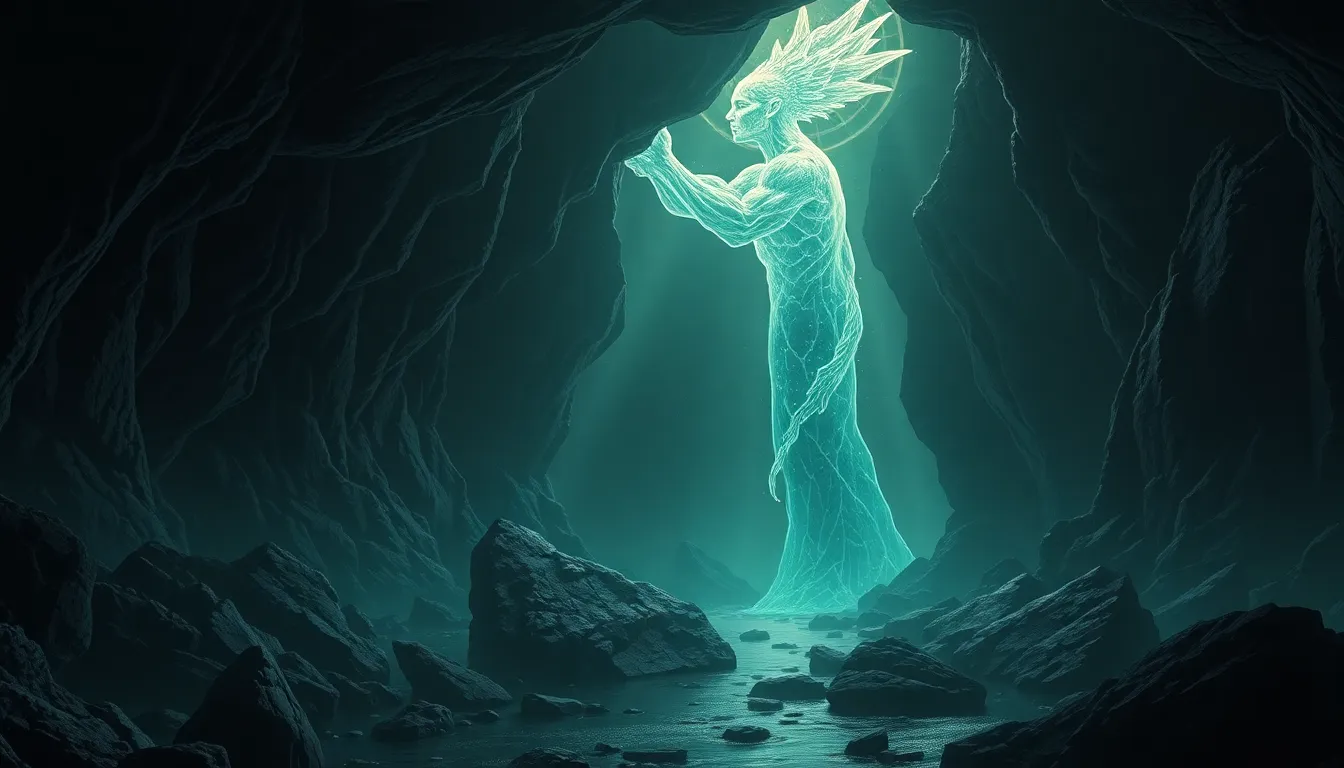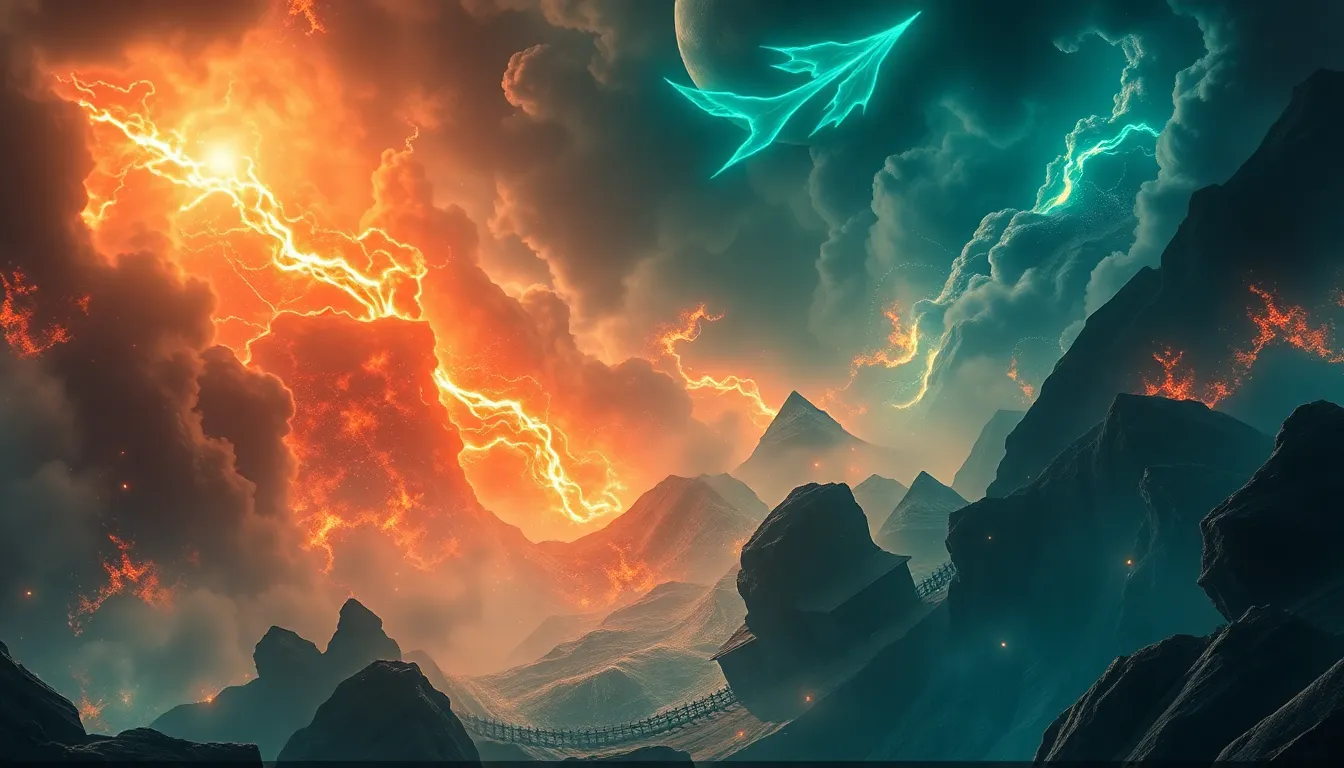Exploring the Underworld: Myths That Challenge Reality
1. Introduction to the Underworld: A Journey Beyond the Surface
The concept of the underworld has fascinated humanity for centuries, manifesting differently across cultures and epochs. Generally, the underworld is perceived as a realm beneath the earth’s surface, often associated with the afterlife, where souls journey after death. This representation varies widely, influenced by religious beliefs, cultural narratives, and philosophical interpretations.
Myths play a crucial role in shaping our understanding of the afterlife, serving as vehicles through which societies express their fears, hopes, and moral teachings. They challenge us to ponder what lies beyond our mortal existence and to confront the mysteries of death itself.
2. Historical Perspectives on the Underworld
Throughout history, several ancient civilizations have offered unique perspectives on the underworld. Each culture’s interpretation has been intertwined with its societal norms, religious beliefs, and moral codes.
- Mesopotamia: The ancient Mesopotamians believed in a shadowy underworld called Irkalla, governed by the goddess Ereshkigal. The dead were thought to lead a dreary existence, highlighting the importance of life on earth.
- Egypt: In contrast, the Egyptians saw the afterlife as a journey to the Field of Reeds, a paradise for those deemed worthy. This belief influenced their elaborate burial practices and the construction of grand tombs.
- Greece: The Greeks viewed the underworld as a complex realm ruled by Hades, where souls were judged and sent to different areas based on their earthly deeds. This belief system emphasized the importance of virtue and justice.
These beliefs not only shaped personal views on death but also influenced societal values, inspiring ethical standards and community practices.
3. The Underworld in Mythology: Key Figures and Deities
Mythology is replete with deities that govern the underworld, each embodying cultural values and societal fears.
- Hades: In Greek mythology, Hades is the god of the underworld, often depicted as stern and unyielding. His realm is a place of both punishment and reward.
- Osiris: The Egyptian god Osiris represents resurrection and rebirth. His story emphasizes the cyclical nature of life and the hope of eternal life after death.
- Anubis: Another vital figure in Egyptian mythology, Anubis is the god of mummification and the afterlife, guiding souls through the journey of death and judgment.
These deities not only play pivotal roles in their respective narratives but also serve as symbolic guardians of the values and beliefs held by their cultures regarding death and the afterlife.
4. Cultural Variations: The Underworld Across Different Traditions
The concept of the underworld varies significantly across cultures, particularly between Eastern and Western traditions.
- Eastern Cultures: In Hinduism, the underworld (Naraka) is a temporary place of punishment for sinful souls, who eventually reincarnate based on their karma. This belief in reincarnation distinguishes Hindu views from those of Western cultures.
- Norse Mythology: The Norse underworld, Hel, ruled by the goddess Hel, serves as a resting place for those who did not die in battle. This reflects the Norse valorization of warrior culture.
These variations highlight how societies conceptualize the afterlife based on their unique historical, philosophical, and cultural contexts.
5. Symbolism and Metaphor: What the Underworld Represents
The underworld is rich in symbolism, often representing themes of death, rebirth, and transformation.
- Death: The underworld is frequently seen as a final destination, a place where the mysteries of mortality are confronted.
- Rebirth: Many myths emphasize cyclical rebirth, mirroring natural processes and the changing seasons.
- Transformation: The journey to the underworld often symbolizes personal transformation, leading to insights about life and existence.
Psychologically, these themes resonate with individuals, helping them navigate their fears and uncertainties surrounding death.
6. The Underworld in Literature and Art
The underworld has inspired numerous literary and artistic works, serving as a backdrop for exploring human emotions and existential questions.
- Dante’s Inferno: This epic poem vividly depicts the journey through the nine circles of Hell, representing sin and moral judgment. Dante’s work reflects the medieval worldview of sin and redemption.
- The Epic of Gilgamesh: This ancient text explores themes of mortality and the quest for immortality, illustrating humanity’s eternal struggle against death.
These works convey cultural fears and aspirations, allowing audiences to reflect on their beliefs about life and the afterlife.
7. Modern Interpretations: The Underworld in Contemporary Media
In contemporary media, the underworld continues to be a popular theme, reimagined through various forms such as films, books, and video games.
- Films: Movies like “Hercules” and “What Dreams May Come” explore different facets of the afterlife, often blending mythology with modern storytelling.
- Books: Novels such as “American Gods” by Neil Gaiman delve into the intersection of mythology and modernity, presenting a fresh take on ancient beliefs.
- Video Games: Titles like “God of War” and “Hades” engage players with interactive narratives that explore themes of death and the afterlife.
Modern technology has enhanced storytelling, allowing creators to present complex narratives that resonate with contemporary audiences.
8. Challenging Reality: Myths That Push the Boundaries of Belief
Many myths challenge our understanding of life and death, pushing the boundaries of belief and skepticism.
- The Myth of Orpheus: This tragic tale of Orpheus’s descent into the underworld to retrieve his beloved Eurydice raises questions about love, loss, and the inevitability of death.
- The Tale of Persephone: Persephone’s dual existence in the underworld and the world above reflects themes of seasonal change and the cyclical nature of life.
These myths encourage audiences to explore their beliefs, often blurring the lines between reality and fiction.
9. The Psychological and Sociological Impact of Underworld Myths
Underworld myths play a significant role in shaping psychological resilience and community cohesion.
- Mental Health: Engaging with myths about the afterlife can provide comfort, offering individuals a framework for processing grief and loss.
- Social Cohesion: Shared beliefs in underworld myths can foster community bonds, creating a collective understanding of life, death, and morality.
These myths serve not only as stories but also as tools for navigating the complexities of human existence.
10. Conclusion: The Enduring Legacy of Underworld Myths
Underworld myths continue to captivate and influence our perceptions of life and death, urging us to reflect on our beliefs and values. As we explore the narrative landscapes shaped by these myths, we are invited to confront our uncertainties and embrace the unknown.
In a modern context, it is essential to engage with these ancient stories, as they offer insights into the human condition and the eternal questions that define our existence. By revisiting these narratives, we can cultivate a deeper understanding of our own beliefs about the underworld and what lies beyond.




